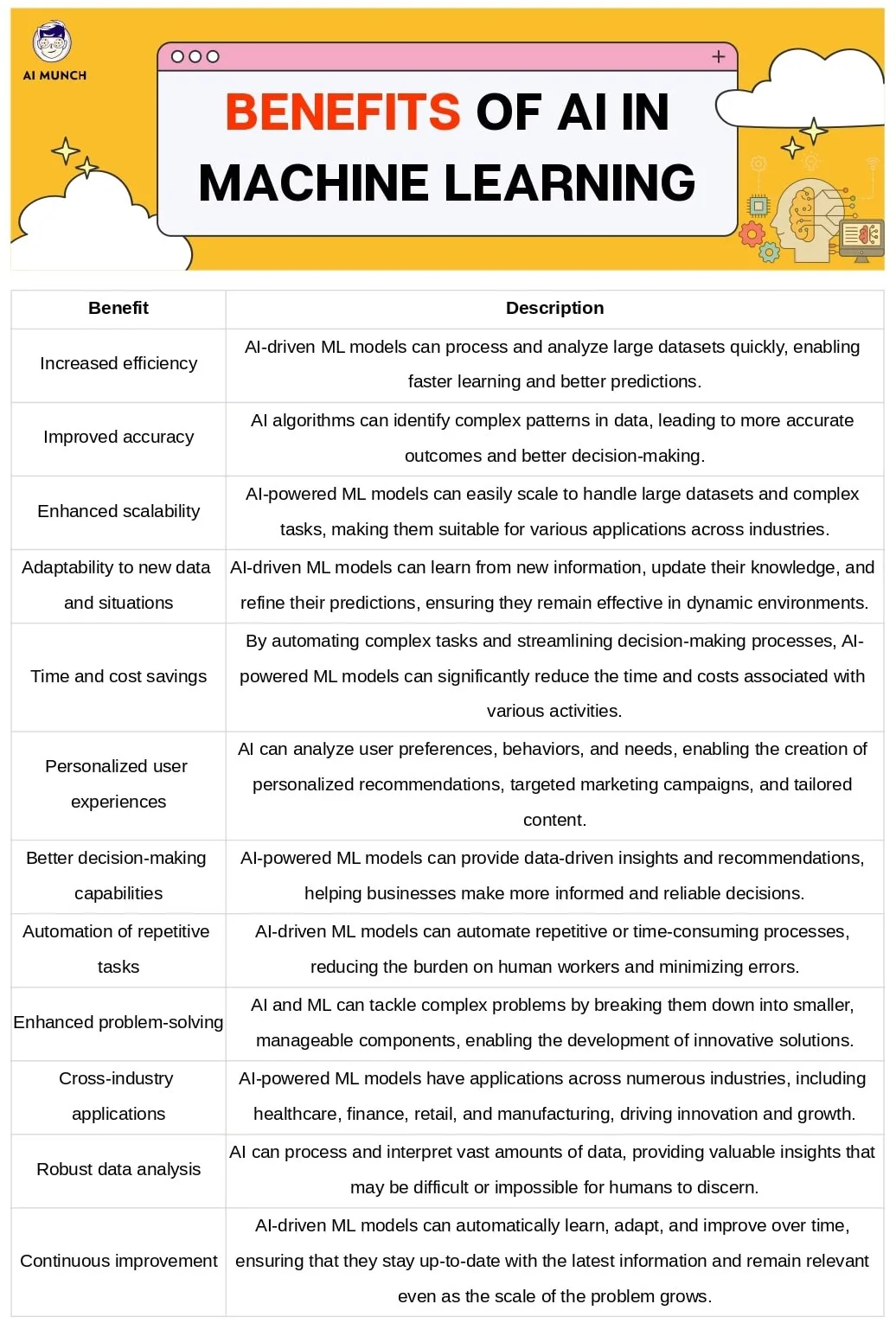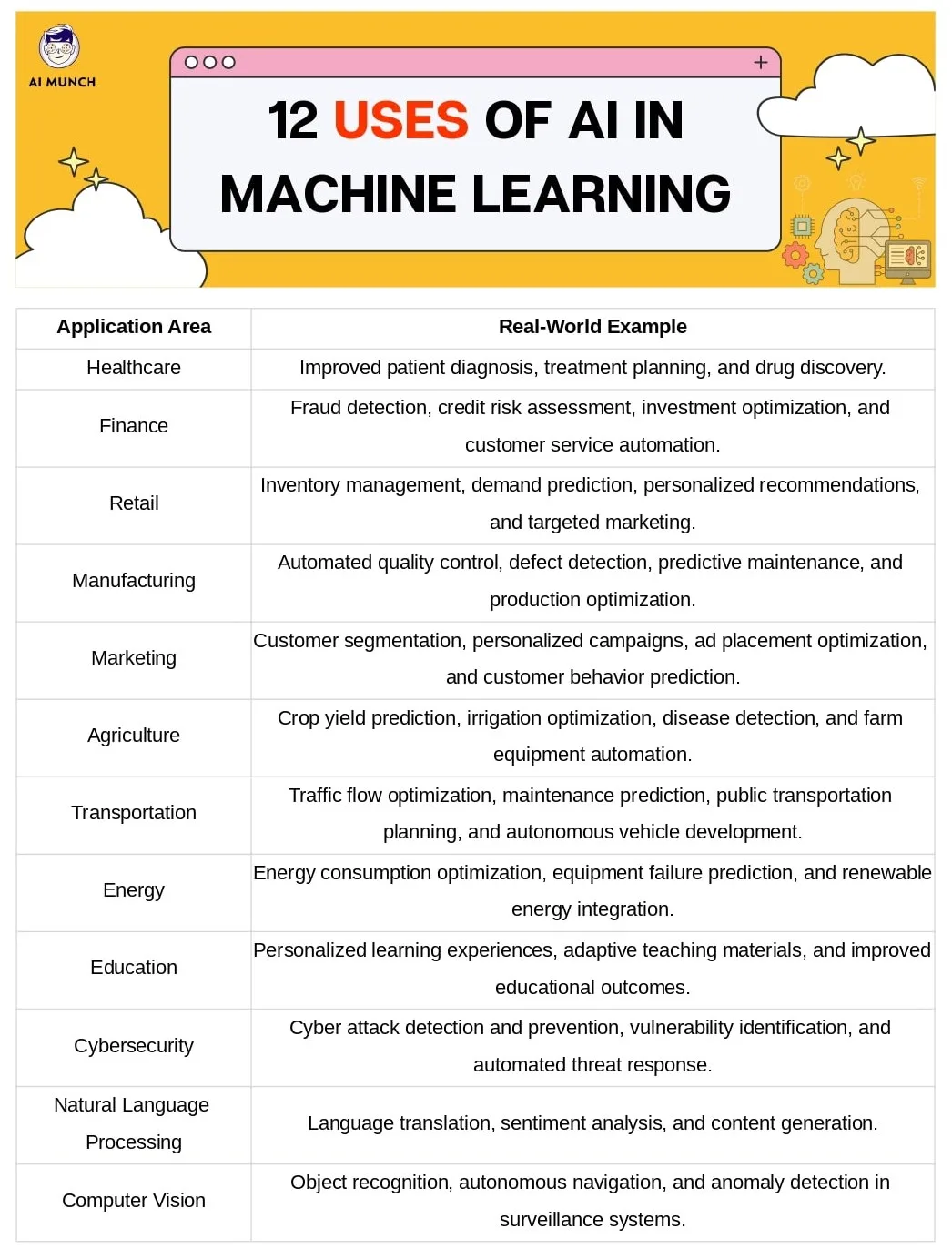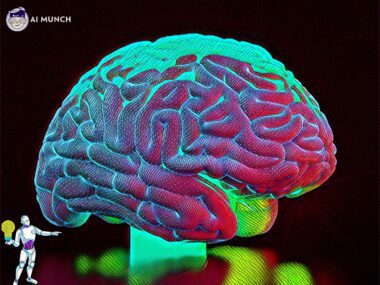Introduction
Artificial Intelligence (AI) and Machine Learning (ML) are two rapidly growing and interconnected fields in the world of technology. AI refers to the development of computer systems that can perform tasks requiring human intelligence, such as problem-solving, learning, reasoning, perception, language understanding, and decision-making. Machine Learning, a subset of AI, focuses on creating algorithms and statistical models that enable computers to learn from and make predictions or decisions based on data without explicit programming. To know how AI learns, you can read here.
A. The connection between AI and Machine Learning
We know how to train an AI model to understand Emotions. The relationship between AI and ML is integral to understanding their combined potential. Machine Learning is a specific approach within AI that allows intelligent systems to learn from data and improve their performance over time. By leveraging ML techniques, AI systems can automatically learn, adapt, and become more efficient, accurate, and capable of handling complex tasks. Neuralink is a good example of this. In other words, ML serves as the driving force behind the advancement of AI, providing the necessary tools and methodologies for creating increasingly sophisticated AI systems.
B. The significance of integrating AI in Machine Learning
Since the Launch of ChatGPT and Google Bard, The AI term is getting trendy. Integrating AI in ML is critical for unlocking the full potential of intelligent systems. By combining the strengths of AI, such as advanced algorithms and powerful computing capabilities, with the learning capabilities of ML, we can develop models that can analyze vast amounts of data, identify patterns, and make better predictions. This integration enables the creation of more efficient, adaptable, and accurate systems that can be applied across various industries, leading to significant advancements in areas such as healthcare, finance, retail, and manufacturing. The integration of AI in ML is not only essential for enhancing the capabilities of these technologies but also for driving innovation and growth in today’s data-driven world.
I. Understanding AI and Machine Learning
A. Definition of AI
Artificial Intelligence refers to the development of computer systems that can perform tasks that would typically require human intelligence. These tasks include problem-solving, learning, reasoning, perception, language understanding, and decision-making. AI systems can be classified as either narrow (Weak) AI, designed to perform specific tasks, or general AI, capable of performing a wide range of tasks with human-like intelligence.
B. Definition of Machine Learning
Machine Learning is a subset of AI that focuses on the development of algorithms and statistical models that enable computers to learn from and make predictions or decisions based on data. ML systems do not require explicit programming to perform tasks; instead, they automatically improve their performance through experience, discovering patterns in the data, and adapting their behavior accordingly.
C. The relationship between AI and Machine Learning
Artificial Intelligence is being used across tons of businesses. While AI encompasses a broader spectrum of intelligent systems, Machine Learning is a specific approach within AI that focuses on learning from data. ML can be considered the driving force behind the advancement of AI, as it provides the necessary tools and techniques for creating sophisticated AI systems. By leveraging ML, AI systems can automatically learn, adapt, and improve over time, making them more efficient, accurate, and capable of handling complex tasks. This relationship between AI and ML is crucial to understand, as it demonstrates how the integration of AI in ML significantly enhances the capabilities of intelligent systems.
II. The Role of AI in Machine Learning
A. Enhancing data analysis and interpretation
Emotional AI is very handy in this matter. One of the primary roles of AI in machine learning is to enhance the analysis and interpretation of vast amounts of data. AI algorithms can quickly process large datasets, identify patterns, and draw meaningful insights that may be difficult or impossible for humans to discern. This ability to make sense of complex data enables ML models to learn, adapt, and improve their performance over time, leading to better predictions and more accurate outcomes.
B. Improving decision-making capabilities
AI-powered ML models can significantly improve the decision-making capabilities of various applications by providing data-driven insights and recommendations. These models can analyze multiple factors and consider complex relationships in the data, allowing them to make more informed and reliable decisions. This improvement in decision-making can be applied across various industries, such as finance, healthcare, and logistics, to optimize processes, reduce costs, and enhance overall efficiency.
C. Personalizing user experiences
AI plays a vital role in personalizing user experiences by leveraging ML algorithms to understand user preferences, behaviors, and needs. By analyzing user data, AI can identify patterns and predict user preferences, enabling the creation of personalized recommendations, targeted marketing campaigns, and tailored content. This level of personalization leads to increased customer satisfaction, better engagement, and higher conversion rates.
D. Streamlining complex tasks and automating repetitive tasks
AI-powered ML models can streamline complex tasks by breaking them into smaller, manageable components and automating repetitive or time-consuming processes. This automation reduces the burden on human workers, minimizes errors, and increases the overall efficiency of the task. Examples of such tasks include image recognition, natural language processing, and fraud detection, where AI and ML can perform with high accuracy and speed, outperforming traditional methods.
III. Benefits of AI in Machine Learning
A. Increased efficiency and accuracy
We know Machine Learning can improve business intelligence. Integrating AI in machine learning significantly improves the efficiency and accuracy of ML models. By leveraging advanced algorithms and computing power, AI can process and analyze large amounts of data quickly, enabling ML models to learn faster and make better predictions. This increased efficiency and accuracy can lead to more reliable outcomes, improved decision-making, and better overall performance.
B. Enhanced scalability
AI-powered ML models can easily scale to handle large datasets and complex tasks, making them suitable for a wide range of applications across various industries. As new data becomes available, AI systems can automatically learn and adapt, ensuring that the ML models remain relevant and effective even as the scale of the problem grows.
C. Improved adaptability to new data and situations
AI-driven ML models are highly adaptable to new data and changing situations. These models can automatically learn from new information, update their knowledge, and refine their predictions, enabling them to stay relevant and effective in dynamic environments. This adaptability is crucial for applications where the underlying data or conditions change frequently, such as financial markets or rapidly evolving technologies.
D. Time and cost savings
By automating complex tasks and streamlining decision-making processes, AI-powered ML models can significantly reduce the time and costs associated with various activities. This automation not only frees up human resources for more strategic tasks but also minimizes errors and improves overall efficiency, resulting in considerable time and cost savings for businesses and organizations.

IV. Real-world Applications of AI in Machine Learning
A. Healthcare: Diagnosis, treatment, and drug discovery
AI-driven ML models can improve patient diagnosis by analyzing medical images, electronic health records, and genetic information in healthcare. They can also assist in treatment planning, predict patient outcomes, and accelerate drug discovery by identifying potential drug candidates and optimizing clinical trials.
B. Finance: Fraud detection, risk management, and customer service
AI-powered ML models play a crucial role in the finance industry by detecting fraudulent activities, assessing credit risk, and optimizing investment strategies. They can also improve customer service by providing personalized financial advice, automating customer interactions, and streamlining onboarding processes.
C. Retail: Inventory management, recommendation systems, and personalized marketing
AI-driven ML models can optimize inventory management in retail by predicting demand and automating replenishment processes. They can also enhance customer experiences by providing personalized product recommendations and creating targeted marketing campaigns based on customer preferences and behavior.
D. Manufacturing: Quality control, predictive maintenance, and optimization
AI-powered ML models can revolutionize manufacturing by automating quality control processes, identifying defects in real time, and proactively predicting equipment failures to schedule maintenance. They can also optimize production processes by analyzing data from sensors and machines, identifying bottlenecks, and recommending improvements to enhance overall efficiency.

V. Ethical Considerations and Challenges in AI and Machine Learning
A. Bias and fairness
Off Course, AI has dark sides as well. One of the critical ethical challenges in AI and ML is addressing bias and fairness. ML models learn from the data they are trained on, and if the data contains biased information or lacks diversity, the models can inherit these biases and produce unfair outcomes. Ensuring fairness in AI systems requires careful data collection, processing, and validation and the development of techniques to mitigate bias during the training process.
B. Privacy and data security
As AI-driven ML models rely heavily on data, privacy and security become significant concerns. The collection, storage, and use of sensitive information can lead to potential privacy breaches and expose individuals to risks such as identity theft or unauthorized surveillance. Implementing robust data protection measures and following ethical guidelines is essential to ensure data privacy and security.
C. Transparency and explainability
AI and ML models are often criticized for being “black boxes” due to their complex inner workings and lack of transparency. This lack of explainability can make it difficult for users to trust AI-driven decisions and understand how the models arrived at a particular outcome. Developing techniques to improve the transparency and explainability of AI systems is an ongoing challenge and an essential aspect of building trust in AI technologies.
D. Regulation and legal implications
As AI and ML continue to advance and permeate various sectors, there is a growing need for clear regulations and legal frameworks to govern their use. These regulations should address issues such as accountability, liability, and intellectual property while balancing the need for innovation and growth in the field. Establishing appropriate regulatory measures can help ensure the responsible development and deployment of AI-driven ML applications.
Conclusion
AI plays a crucial role in enhancing the capabilities of machine learning models, leading to increased efficiency, accuracy, and adaptability. By integrating AI in ML, we can unlock the full potential of these technologies and apply them across various industries to drive innovation and create value. However, it is essential to address the ethical challenges and establish robust regulations to ensure that the benefits of AI-driven ML applications are realized responsibly and equitably. As we continue advancing in AI and Machine learning, we expect to see even more remarkable growth and transformative applications that will shape our future.
FAQs
We need AI and machine learning because they have the potential to revolutionize various aspects of our lives, making processes more efficient, accurate, and cost-effective. AI and ML can help businesses make better decisions, optimize operations, and create personalized experiences for customers. Moreover, they can address complex problems and automate repetitive tasks, freeing up human resources for more creative and strategic endeavors.
Machine learning is needed to enable computers to learn from data and make predictions or decisions without being explicitly programmed. This ability allows ML models to adapt and improve over time, handling complex tasks and providing valuable insights that humans may be unable to discern. Machine learning has applications across numerous industries, including healthcare, finance, retail, and manufacturing, making it an essential technology for driving innovation and growth.
The three main purposes of machine learning are:
a. Prediction: ML models can predict future outcomes based on historical data, helping businesses make informed decisions and optimize processes.
b. Classification: ML algorithms can identify and categorize data, enabling applications like spam detection, image recognition, and sentiment analysis.
c. Recommendation: Machine learning can provide personalized recommendations by analyzing user preferences and behavior, enhancing user experiences in areas like e-commerce, content consumption, and advertising.
The most important part of machine learning is the data used for training and validation. High-quality, diverse, and unbiased data is crucial for developing accurate and reliable ML models. Additionally, selecting the right algorithm, feature engineering, and model tuning play essential roles in achieving successful machine learning outcomes.
Learning machine learning depends on your interests, goals, and career path. If you are working in a field that involves data analysis, decision-making, or automation, having a solid understanding of machine learning can be beneficial. Machine learning skills are in high demand across various industries, and learning ML can open up new career opportunities and help you stay relevant in the rapidly changing technological landscape.
The benefits of machine learning include:
a. Increased efficiency and accuracy: ML models can quickly process large datasets and make accurate predictions, improving decision-making and overall performance.
b. Enhanced scalability: ML models can easily scale to handle large datasets and complex tasks, making them suitable for a wide range of applications.
c. Improved adaptability: ML models can learn from new data and adapt to changing situations, ensuring they remain relevant and effective in dynamic environments.
d. Time and cost savings: Machine learning can significantly reduce the time and costs associated with various activities by automating complex tasks and streamlining processes.
Do you want to read more? Check out these articles.










